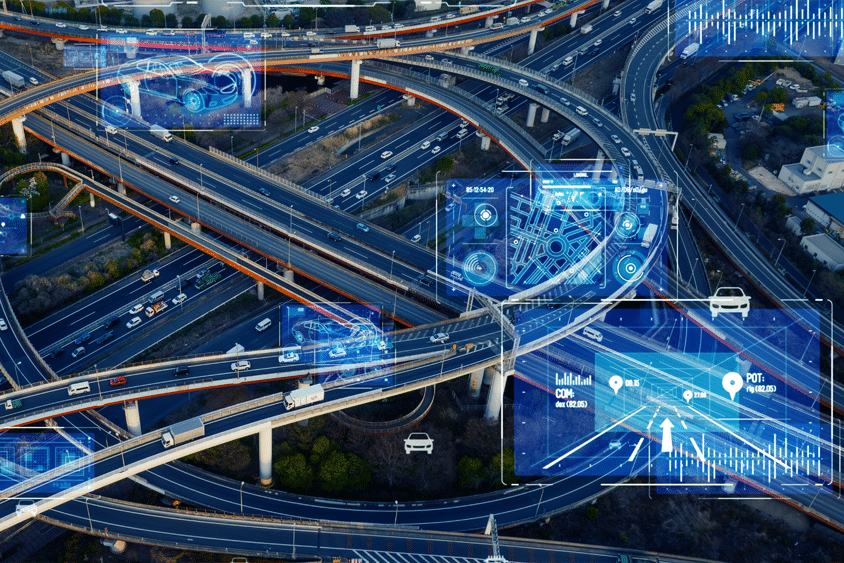In today’s fast-paced business environment, managing a fleet of vehicles efficiently is essential for reducing costs, improving safety, and enhancing overall productivity.
Our Tele-Gence Telematics service offers a comprehensive solution for tracking all vehicles and assets 24/7.
With advanced tracking technology, real-time alerts, and detailed reporting, Tele-Gence provides businesses with the tools to manage their fleet securely and efficiently.
Learn more about our telematics packages here.
Why your fleet needs telematics
This section will discuss why telematics are crucial for fleet car management.
1. Improved fleet security
Vehicle theft can be a major concern for fleet owners. The ability to track your vehicles in real-time offers peace of mind, knowing that you’ll be immediately alerted if your vehicles are moved outside of designated hours or if their trackers are tampered with.
Tele-Gence’s advanced tracking system includes features like geofencing, which allows you to create virtual boundaries around your vehicles or assets. You will get a notification should they move out of these pre-set areas, which secures them against unauthorised use or theft.
Besides this, our asset trackers are designed to be hidden and tamper-proof to prevent thieves from even locating and removing them before the theft of a vehicle or asset.
Discover why this is so important in our UK fleet crime article.
2. Improved fleet visibility
Tele-Gence always ensures visibility regarding your fleet. Our telematics system lets you see where your vehicles are, what they are doing, and which driver is closest to a new job or location.
Such insight is vital in optimising route planning, reducing downtime, and making sure deliveries or service calls are on time. It will enable you to track all your vehicles from one central platform and save you from wasting time and energy checking each of them individually.
If you want to find out more about vehicle tracking, view our fleet tracking services.
3. Easy fuel card integration
For those already utilising fuel cards, seamless integration is assured with Tele-Gence.
This allows the fleet manager to receive alerts on fuel fraud and actual miles per gallon reports for potential issues like inefficient driving habits or underperforming vehicles.
In addition, gaining accurate MPG reports is important for industry accreditations such as FORS, making it easier to maintain compliance and demonstrate your fleet’s environmental efficiency.
How Tele-Gence fleet telematics works
Tele-Gence’s telematics system is designed to be user-friendly and flexible, making it easy to integrate into your existing fleet operations. Here’s how it works:
1. Choose the right fleet system package
Tele-Gence offers multiple competitively priced packages to choose from, depending on what is best for your fleet and your budget. Whether you’re a sole trader with a van or a full-scale fleet, we have a solution for you.
2. Fleet tracker installation
Next, after choosing a suitable package, our engineers will pay a visit to your location for tracker installations in the vehicles. For added convenience, we also provide self-installations that let you install trackers at your own pace and according to your timing.
3. Track and monitor your fleet data
Once installed, you are ready to start monitoring your fleet through the Tele-Gence Online Portal.
The web-based platform includes location tracking in real-time, notifications regarding odd activities or behaviours, driver behaviour ratings, and comprehensive reporting.
An intuitive all-in-one device for having absolute control over the operations of your fleet for security enhancement, cost reduction, and efficiency maximisation.
Key features of Tele-Gence fleet telematics
The Tele-Gence platform offers a suite of features that ease the operational workload on fleet management and ensure more efficiency.
Some of these features include:
1. Real-time tracking of vehicle location
Using Tele-Gence, each vehicle in your fleet can be tracked in real-time. This feature is extremely valuable for delivery schedule management, dispatching of vehicles to the nearest job, and ensuring drivers are where they need to be.
2. Driver behaviour monitoring
Tele-Gence helps in tracking drivers’ behaviour through detailed scores that are factored by cases of speeding, harsh braking, cornering, and accelerating.
Through this feature, you can set thresholds of tolerance and track the performance scores across your fleet.
Driver behaviour monitoring enhances safety and will hence help you to understand where drivers need to adjust their performances to reduce fuel consumption and lower accident rates.
Still wondering how can efficient driving reduce fuel costs? Our blog can help.
3. Geofencing and alerts
Set geofencing virtual boundaries for your vehicles or assets. If any asset or vehicle moves out of these zones, you get an immediate alert.
The feature is particularly useful in delivery monitoring, ensuring the assets are not moved out of the designated areas, and preventing unauthorised after-hours use of vehicles.
4. Dashcam footage and incident monitoring
With Tele-Gence, you will be able to install connected dashcams in your fleet vehicles. These cameras capture visual evidence of incidents to help you understand exactly what took place during a collision or other event.
Whether it is an at-fault accident or a case of reckless driving, this footage from the dashcam will provide your business with irrefutable evidence that could protect your business and increase driver accountability.
5. Customisable reports and data insights for fleet system telematics
Tele-Gence has designed a configurable suite of reports that can be delivered directly to your inbox on a scheduled basis.
From fuel usage and mileage to driver performance and maintenance reports, the platform allows detailed analysis of your fleet data.
Analysing these insights should provide the ability to realize trends that could help improve operational efficiencies and reduce unnecessary costs.
Integration with fuel cards
For companies currently using fuel cards, Tele-Gence can easily integrate to provide further and more sophisticated insights into fuel usage. The integration allows you to:
Fuel fraud alerts
Receive notifications if the fuel card is used in a location that does not match the GPS coordinates of the vehicle for fraud detection and prevention in fuel.
MPG reporting
Get correct reports regarding your fleet’s fuel efficiency. This data is a real treasure in finding the worst-performing vehicles to improve or alter driving behaviour.
Solutions tailored for each business
Tele-Gence knows that no two fleets are identical. That’s why we provide customisable packages, which offer much more than mere vehicle tracking.
Whether you want hardwired trackers, self-installation options, or cameras, we tailor these into a solution that fits your particular business needs.
Be it expensive assets or employee behaviour, Tele-Gence brings total visibility and control.
Protect and optimise your fleet with a Fuel Card Services telematics system
Contact us today and learn more about how Tele-Gence can transform your fleet management.





